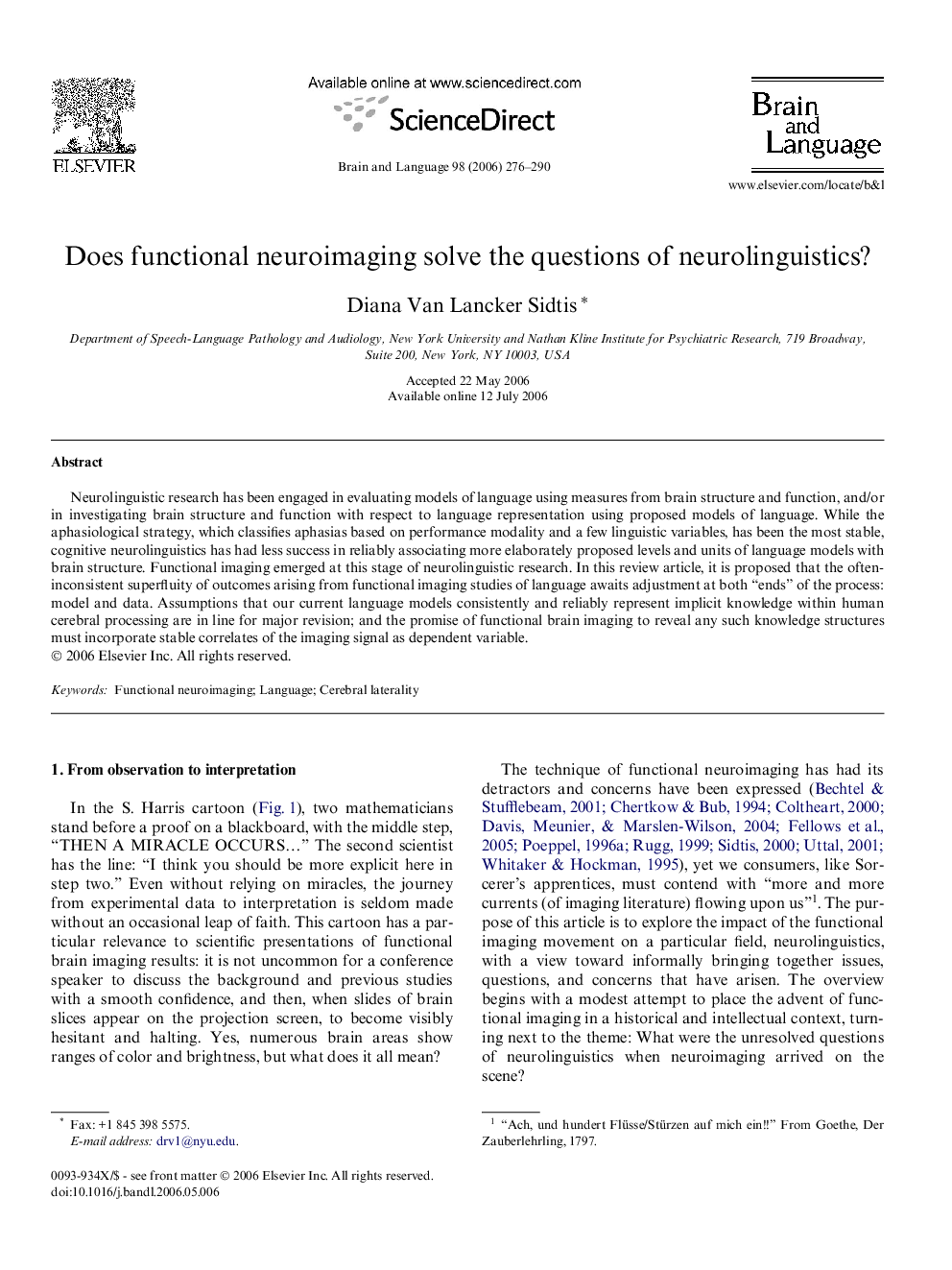| Article ID | Journal | Published Year | Pages | File Type |
|---|---|---|---|---|
| 926034 | Brain and Language | 2006 | 15 Pages |
Neurolinguistic research has been engaged in evaluating models of language using measures from brain structure and function, and/or in investigating brain structure and function with respect to language representation using proposed models of language. While the aphasiological strategy, which classifies aphasias based on performance modality and a few linguistic variables, has been the most stable, cognitive neurolinguistics has had less success in reliably associating more elaborately proposed levels and units of language models with brain structure. Functional imaging emerged at this stage of neurolinguistic research. In this review article, it is proposed that the often-inconsistent superfluity of outcomes arising from functional imaging studies of language awaits adjustment at both “ends” of the process: model and data. Assumptions that our current language models consistently and reliably represent implicit knowledge within human cerebral processing are in line for major revision; and the promise of functional brain imaging to reveal any such knowledge structures must incorporate stable correlates of the imaging signal as dependent variable.
